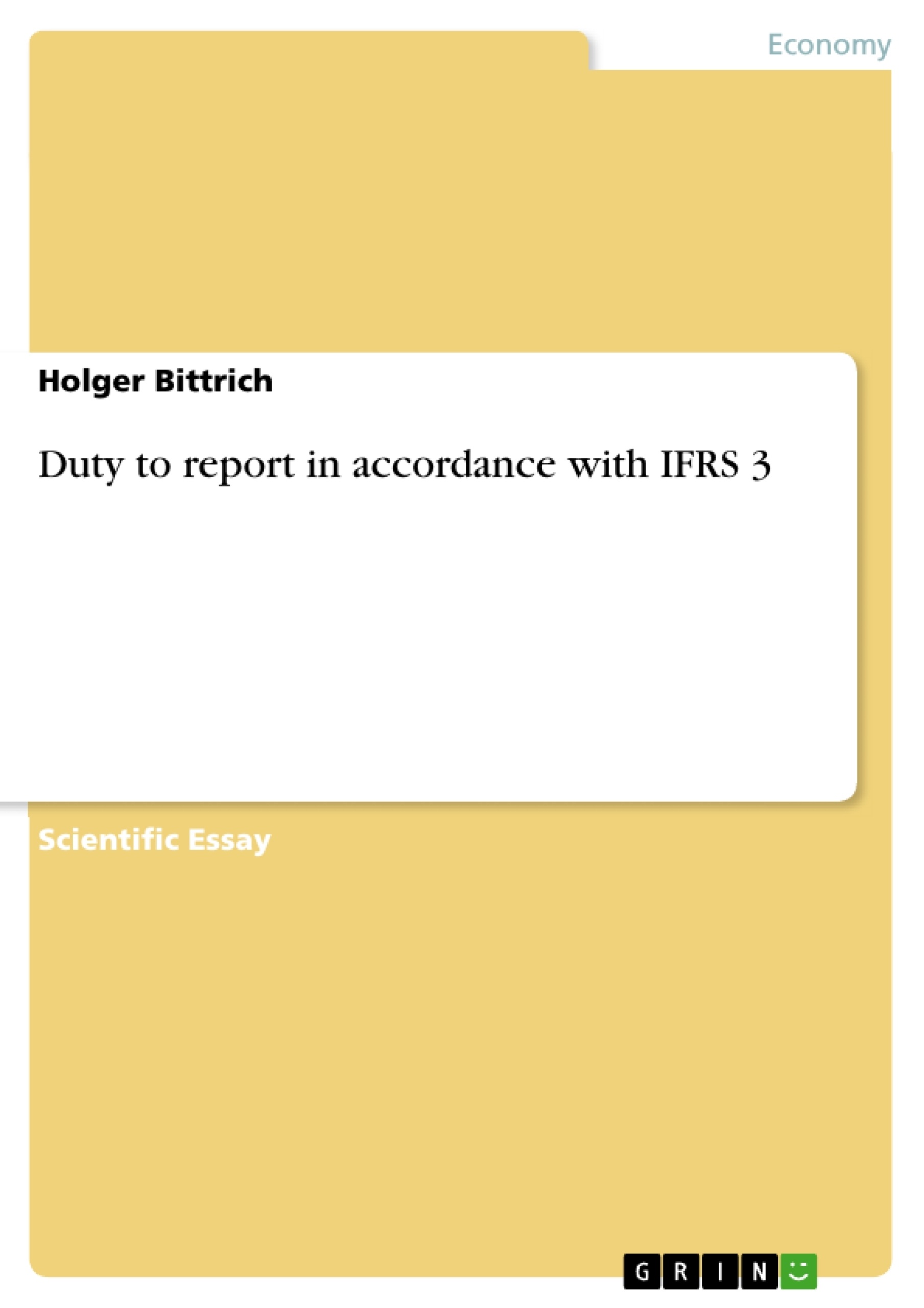In principle, the acquiring company has to publish various information about the business combinations transacted in a reporting period in its group accounts. This is true both for those business combinations which took place during the reporting period and for those post-balance sheet business combinations which took place before release for publication of the financial statements.
The information provided in the context of the report are meant to enable the reader of the year-end accounts to judge the type and the financial effects of the business combinations.
Information deemed necessary to disclose includes in particular profits, losses and error corrections of business combinations, as well as changes in derivative goodwill.
Inhaltsverzeichnis (Table of Contents)
- General reporting obligations
- Reporting obligations concerning the first consolidation
- The name and descriptions of the combined companies or businesses
- The acquisition date
- The percentage share of the acquired equity instruments with voting rights
- The purchase costs of the combination and a description of the components of these purchase costs, including all costs directly attributable to the combination
- Details of all business units which the company wants to sell as a consequence of the business combination
- The amounts set for each group of assets, liabilities and contingent liabilities of the acquired company as recorded at the acquisition date, and the book values of each of these classes determined in accordance with IFRS directly before the combination
- The amount of every negative balance charged to profit in accordance with IFRS 3.56 and the items in the profit and loss account to which the surplus was recorded
- A description of the factors contributing to the purchase costs, which led to the recording of the goodwill
- A description of every intangible asset not recorded separately from goodwill and an explanation why the fair value of the intangible asset could not be reliably valued; or a description of the type of each negative balance which was posted to profit in accordance with paragraph 56.
- The amount of profit or loss of the acquired company since the acquisition date which is contained in the period result of the acquiring company.
- Reporting obligations relating to subsequent consolidation
- The gross amount and the cumulative amortization at the beginning of the reporting period
- Goodwill which was first posted during the reporting period, excluding goodwill contained in a disposal group which fulfils, on acquisition, the criteria for classification “held for disposal” in accordance with IFRS 5.
- Adjustments due to subsequently recorded deferred tax in accordance with IFRS 3.65 during the reporting period.
- Goodwill contained in a disposal group specified as “held for disposal\" as per IFRS 5, and goodwill which was written off during the reporting period without having previously belonged to a disposal group “held for disposal\".
- Amortization expenses which were recorded during the reporting period in accordance with IAS 36.
- Net exchange differences occurring during the reporting period in accordance with IAS 21.
- Other changes in book value during the reporting period
- The gross amount and the cumulative amortization expense as at the end of the reporting period.
Zielsetzung und Themenschwerpunkte (Objectives and Key Themes)
This document outlines the reporting obligations for business combinations under IFRS 3. It aims to provide guidance on the information that acquiring companies must disclose in their group accounts concerning the business combinations they transact. The main objectives are to ensure transparency and accountability in financial reporting, enabling users of financial statements to understand the type and financial effects of business combinations.- Reporting Obligations for Business Combinations under IFRS 3
- Information Disclosure for Transparency and Accountability
- First-time Consolidation Reporting Requirements
- Subsequent Consolidation Reporting Requirements
- Goodwill Accounting and Reporting
Zusammenfassung der Kapitel (Chapter Summaries)
General reporting obligations
This chapter introduces the general reporting obligations for business combinations under IFRS 3. It explains that acquiring companies must publish information about the business combinations they transact in their group accounts, both for combinations occurring during the reporting period and for those taking place before the financial statements are released for publication. The chapter highlights the importance of providing information that enables users of financial statements to judge the type and financial effects of business combinations.Reporting obligations concerning the first consolidation
This chapter focuses on the specific reporting obligations for the first consolidation of a business combination. It outlines a comprehensive list of information that needs to be disclosed, including the names of the companies involved, the acquisition date, the percentage share of voting rights, and detailed information about the purchase costs. It also addresses the need to disclose information about assets, liabilities, and contingent liabilities of the acquired company, along with the accounting treatment of goodwill and negative balances.Reporting obligations relating to subsequent consolidation
This chapter addresses the reporting obligations for subsequent consolidations of business combinations. It focuses on the need to provide a reconciliation statement of the book value of goodwill at the beginning and end of the reporting period. The chapter outlines the specific information that needs to be included in the reconciliation statement, such as the gross amount of goodwill, amortization expenses, and adjustments due to deferred tax. It also discusses the reporting requirements for business combinations with provisional initial financing and emphasizes the importance of materiality considerations in reporting obligations.Schlüsselwörter (Keywords)
The key terms and concepts covered in this document include business combinations, IFRS 3, reporting obligations, consolidation, goodwill, purchase costs, acquisition date, fair value, amortization, deferred tax, and materiality. The text explores the specific reporting requirements for business combinations under IFRS 3, focusing on the information that must be disclosed to ensure transparency and accountability in financial reporting. The document also highlights the accounting treatment of goodwill and the need to reconcile the book value of goodwill over time.- Quote paper
- Holger Bittrich (Author), 2009, Duty to report in accordance with IFRS 3, Munich, GRIN Verlag, https://www.grin.com/document/121000



